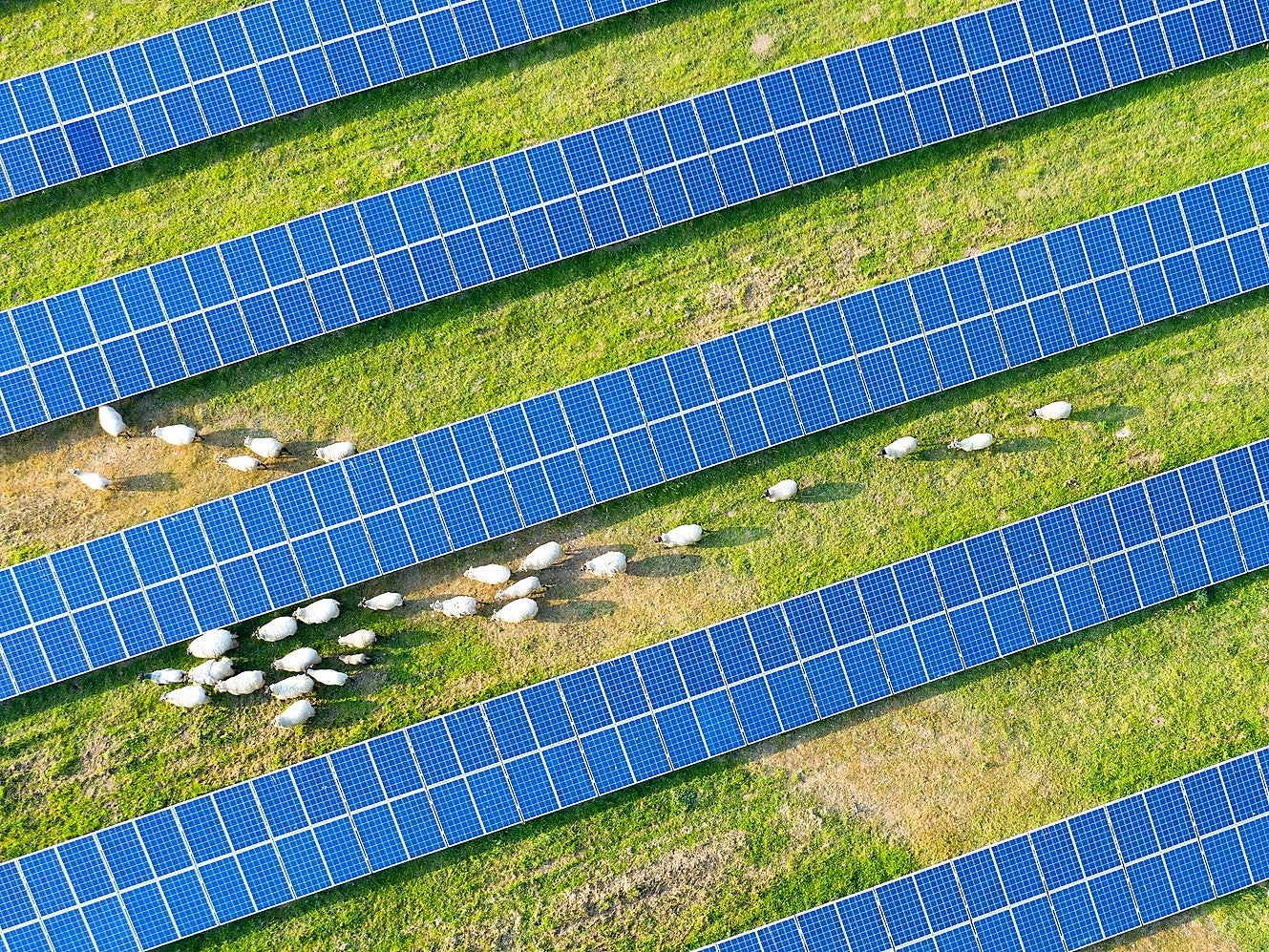Solar panel sheep farm trial ‘a complete win-win’
‘They’re growing exponentially and the wool cuts are in the top 5 per cent in the district,’ farmer says

Your support helps us to tell the story
This election is still a dead heat, according to most polls. In a fight with such wafer-thin margins, we need reporters on the ground talking to the people Trump and Harris are courting. Your support allows us to keep sending journalists to the story.
The Independent is trusted by 27 million Americans from across the entire political spectrum every month. Unlike many other quality news outlets, we choose not to lock you out of our reporting and analysis with paywalls. But quality journalism must still be paid for.
Help us keep bring these critical stories to light. Your support makes all the difference.
Sheep farmers in Australia have reported that their wool has improved in both quality and quantity since installing arrays of solar panels on their properties.
A four year trial in New South Wales was described as a “complete win-win” by local farmers, with the panels providing shelter for the sheep and grass, and the sheep grazing any foliage that might block sunlight from reaching the panels.
“It is actually quite astonishing. Some of the sheep look fantastic. They’re growing exponentially and the wool cuts are in the top 5 per cent in the district,” wool broker Graeme Ostini told ABC News.
Other graziers reported “very, very little contamination of the wool” and an increase in the carrying capacity of the land due to the panels protecting it during times of drought.
Higher quantities of available grass for grazing have been reported in previous studies, with researchers in Oregan finding that photovoltaic arrays increased biomass production by 90 per cent.
The 2018 study attributed the improved growth to increased water efficiency of more than 300 per cent, as the ground is able to retain more moisture in semi-arid regions.
The trial in Australia will likely lead to more in-depth studies into the integration of farming and renewable energy sites, potentially opening up far more sites around the world to the possibility of hosting solar arrays.
The researchers now hope to carry out more large-scale trials and are seeking funding for pilot studies of other types of farming.
“We’re starting to get a really good database of studies showing how the co-location of agriculture and photovoltaics can be done successfully,” said Dr Madeline Taylor, an energy policy and landholder rights researcher.
“We’ve seen that it works really well for grazing. Now, believe it or not, cropping can also really work very well alongside solar energy.”

Join our commenting forum
Join thought-provoking conversations, follow other Independent readers and see their replies
Comments